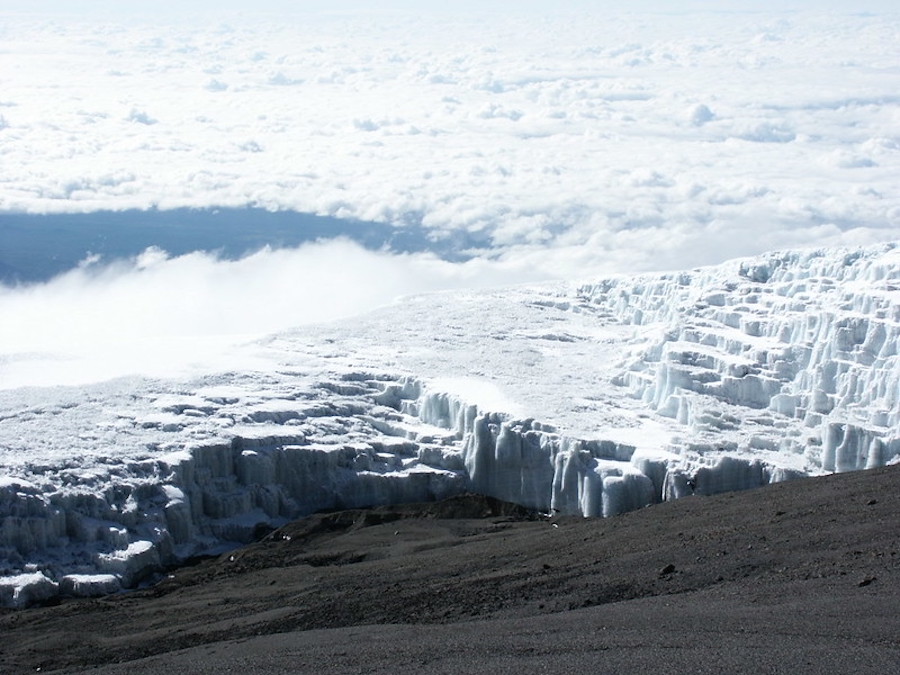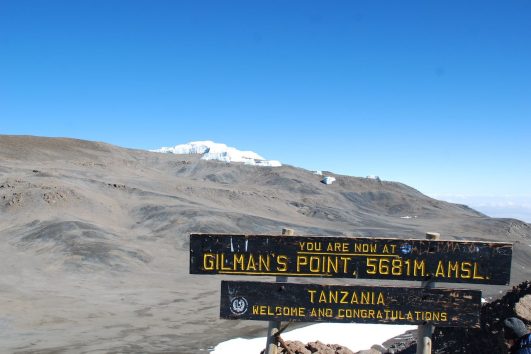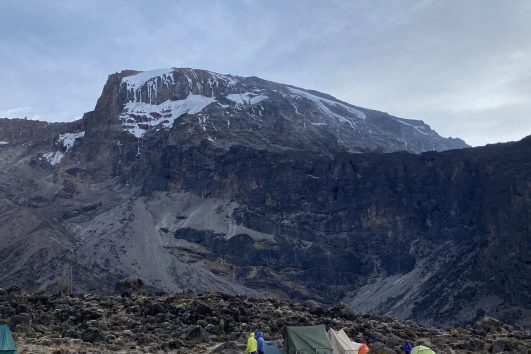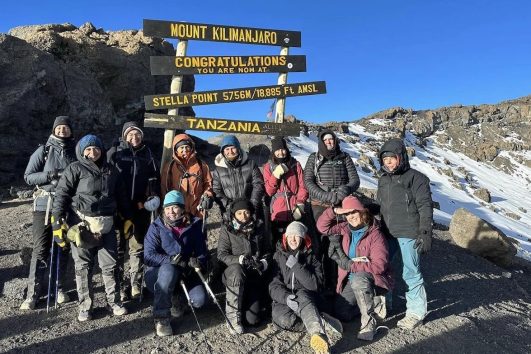Mount Kilimanjaro isn’t just famous for its breathtaking summit; it’s also home to a few iconic glaciers that have been perched high on its slopes for thousands of years. One such glacier is the Drygalski Glacier, a lesser-known gem found on Kilimanjaro’s southern face. While it’s not as talked about as the glaciers on the northern side, Drygalski is a crucial part of the mountain’s icy legacy—and sadly, it’s a reminder of just how rapidly climate change is altering our world.
What’s the Story Behind Drygalski Glacier?
The glacier is named after Erich von Drygalski, a German geographer and polar researcher who studied glaciers in the early 20th century. Like other glaciers on Kilimanjaro, Drygalski formed during a much colder period in Earth’s history, when the mountain was blanketed in snow and ice year-round. These days, it’s one of the last remnants of that icy era, offering a rare glimpse into Kilimanjaro’s glaciated past.
Although it’s not a part of the typical trekking routes, you can catch sight of this glacier if you’re climbing Kilimanjaro via the Machame or Umbwe routes—two of the more popular paths on the southern side of the mountain. The glacier is slowly retreating, just like Kilimanjaro’s other glaciers, but it still clings to the rocky slopes, waiting to be discovered by those who make the journey.
Where is The Drygalski Glacier Located?
Drygalski Glacier sits on Kilimanjaro’s southern slopes, at an altitude of around 5,500 meters (18,000 feet). It descends from the upper reaches of the mountain, where the volcanic rock gives way to an icy world. Its steep, dramatic formation offers an impressive sight for climbers ascending on the Southern Circuit, especially along the Lemosho or Western Breach routes, where the glacier is most visible.
While the glacier itself is not directly accessible to trekkers, it’s one of the key landmarks for those climbing the mountain from the south. Standing at such high altitudes, surrounded by Kilimanjaro’s volcanic terrain, seeing the glacier feels almost surreal—like you’ve stepped into a different world entirely.
Located on Kilimanjaro’s southern slopes, the Drygalski Glacier sits at an elevation of around 5,000 meters. This glacier, while smaller today, remains a stunning feature for trekkers ascending the Machame, Umbwe, or the challenging Western Breach routes. For those climbing via the Western Breach, the nearby Arrow Glacier—positioned at around 4,800 meters—serves as another key landmark during the ascent, providing climbers with close-up views of Kilimanjaro’s icy remnants as they tackle the steeper sections of the mountain. Together, these glaciers offer a glimpse into Kilimanjaro’s glaciated past and the dynamic forces shaping the mountain today.
The Glacial Decline: A Harsh Reality of Climate Change
One of the most striking things about Drygalski Glacier is that it’s disappearing. Over the last century, the glacier has been shrinking rapidly due to rising global temperatures. In fact, Kilimanjaro’s glaciers have lost a huge amount of ice, and experts believe that by 2050, the mountain may have no glaciers left at all.
The retreat of glaciers like Drygalski is more than just a local issue—it’s part of a global story of climate change. As the glaciers melt, it impacts not only Kilimanjaro’s ecosystem but also the people and wildlife living in the region who rely on the mountain’s water sources.
Can Climbers Get Close to Drygalski Glacier?
Though climbers don’t typically hike directly on the Drygalski Glacier, you’ll be able to spot it from various points along the popular southern routes like Machame and Umbwe. If you’re trekking along these paths, especially near the higher elevations, you’ll get an incredible view of the glacier clinging to the southern slopes of Kilimanjaro.
For those looking for an even closer encounter with Kilimanjaro’s glaciers, the Western Breach route offers some of the best views. This path takes you past some of the last remaining ice fields, including Drygalski Glacier, as you approach the summit from the south-western side.
What Does the Future Hold for Kilimanjaro’s Glaciers?
Sadly, the future of glaciers like Drygalski is uncertain. With climate change continuing at its current pace, it’s likely that Kilimanjaro’s glaciers will be gone within a few decades. However, we can all take steps to help slow this process by supporting climate conservation efforts.
For now, seeing Drygalski Glacier is a once-in-a-lifetime opportunity to witness one of Kilimanjaro’s most remarkable and fragile natural features. If you’re planning a trek up the mountain, make sure to take a moment to appreciate this ice giant while it’s still here—because future generations may never get the chance.





Tour Reviews
There are no reviews yet.
Leave a Review